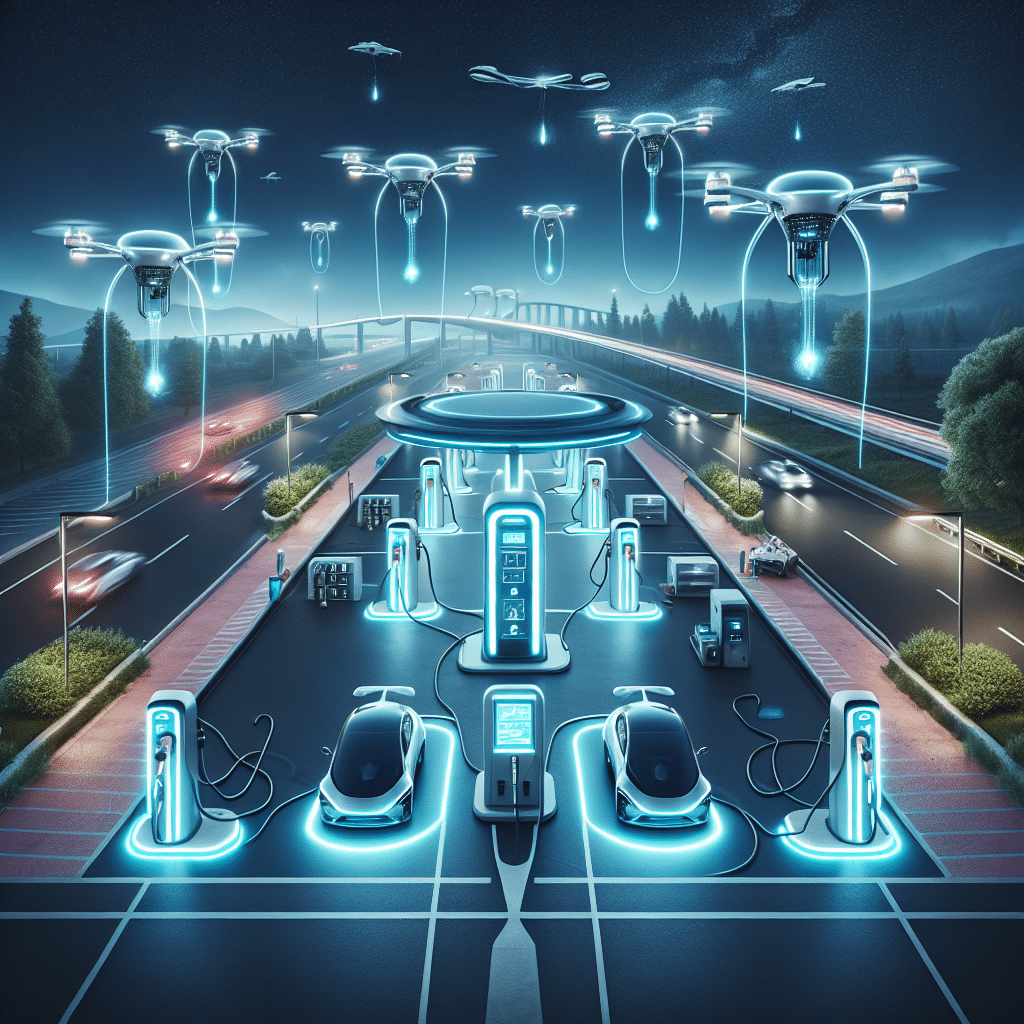Fast Charging Stations for Electric Cars in 2025
Understanding Fast Charging Technology
Fast charging technology has become a cornerstone of the electric vehicle (EV) ecosystem. By 2025, the landscape of fast charging stations will be dramatically enhanced, with improvements in charging speeds, technology, and infrastructure. At the core of this evolution are two major fast charging standards: DC Fast Charging (DCFC) and Ultra-Fast Charging (UFC).
DCFC utilizes direct current to deliver rapid energy transfer, typically capable of charging an EV to 80% in 30 minutes or less. Upcoming technologies, such as 800V systems, will enable UFC stations to charge minute amounts of range in under five minutes, making long-distance travel in EVs more feasible than ever. According to various forecasts, by 2025, charging stations will see their power output increase to 350 kW or more, enabling significant advancements in charging speed and efficiency.
The Rise of Charging Networks
By 2025, EV charging networks will have proliferated, thanks to extensive investments from both private and governmental entities. Companies like Electrify America, ChargePoint, and Tesla will significantly expand their networks, focusing on urban areas, highways, and other strategic locations. The trend will be towards integrating charging stations into existing infrastructures such as shopping centers, parking lots, and gas stations, ensuring users have easy access to charging points.
Home charging infrastructure will also see improvements. Many new residential buildings will include dedicated charging points, aiming to make charging a seamless part of the daily routine. This blend of home, workplace, and public charging options will create an integrated ecosystem that reduces range anxiety and smoothes the transition to electric mobility.
Smart Charging Solutions
Smart charging will fundamentally change how EVs interact with charging stations. By 2025, many stations will be equipped with IoT technologies, allowing for real-time data sharing and dynamic load management. This technology allows users to check charging station availability through mobile apps, reserve charging slots, and make payments seamlessly.
Advanced smart charging systems will also facilitate Vehicle-to-Grid (V2G) technology, where EVs can return energy to the power grid during peak hours. This two-way interaction will help to stabilize the grid, provide incentives to EV owners, and advance renewable energy integration, as EVs can draw from and supply energy to solar or wind sources.
Payment Solutions and Accessibility
The payment landscape for EV charging will overhaul traditional methods. By 2025, expect the prevalent use of contactless payment systems and mobile apps linked to various payment platforms. A driver’s experience will be streamlined through unified apps that integrate multiple charging networks, allowing them to locate, reserve, and pay for charging seamlessly.
Accessibility will also be a focus, with many charging stations being designed to accommodate people with disabilities. Outfitting stations with easy-to-read signs and placing them in accessible locations will ensure inclusivity for all users.
Enhancements in User Experience
User experience will take center stage by 2025, as charging stations evolve to become more than just charging points. Stations will feature amenities such as Wi-Fi, lounge areas with restrooms, and refreshments, providing drivers a comfortable experience during charging waits.
Some stations may integrate digital screens displaying real-time information about local amenities or entertainment options, transforming the wait time into a productive experience. Stations in urban areas may even include electric bike or scooter rentals, allowing users to continue their journeys while their vehicles recharge.
Renewable Energy Integration
By 2025, an increasing number of fast charging stations will be powered by renewable energy sources. Solar panels, wind turbines, and energy storage systems will be employed to create sustainable charging solutions. Such integration will not only reduce the carbon footprint of EVs but also contribute positively to the local grid by supplying electricity during off-peak hours.
In addition, many charging network providers will partner with electric utilities to source green energy, ensuring that charging an electric vehicle is as eco-friendly as possible. This alignment will help to boost consumer confidence in adopting EVs, emphasizing the ecological advantages of electric mobility.
Government Policies and Incentives
Governments worldwide will continue to drive the expansion of charging infrastructure through tax incentives, subsidies, and regulations. By 2025, expect an increased focus on establishing low-emission zones in city centers where only electric vehicles can operate. This initiative will necessitate a robust charging infrastructure to support the transition.
In addition, grants and subsidy programs will help businesses and homeowners install their own charging infrastructure, paving the way for a more interconnected network. On a broader scale, it’s anticipated that developing standards for generation and setting minimum charging speeds will also play a crucial role in the further normalization of fast charging stations.
Challenges and Solutions
Despite rapid advancements, challenges still loom in the fast-charging domain. One major issue is the strain on the electrical grid during peak charging periods. Solutions such as demand response management, where charging rates are adjusted based on grid demand, will become increasingly important.
Moreover, the issue of standardization across different EV models and charging equipment will continue to be addressed. By 2025, a unified charging standard may become more prevalent, mitigating compatibility issues and improving user experience.
Impact on Range Anxiety
One of the most significant aspects of the 2025 fast charging landscape is its impact on range anxiety. With fast charging stations more ubiquitously available and capable of charging EVs much faster than before, drivers will experience greater confidence in their decision to switch to electric vehicles. This change will likely accelerate the transition to electric transportation, as both consumers and manufacturers embrace electric models with improved charging capabilities.
Conclusion
By 2025, fast charging stations will undoubtedly transform the electric vehicle market, becoming a crucial component in the quest for sustainable transportation. With advancements in charging technologies, robust charging networks, smart solutions, renewable energy integration, and supportive government policies, the electric future is not just on the horizon—it’s charging towards us at lightning speed.
